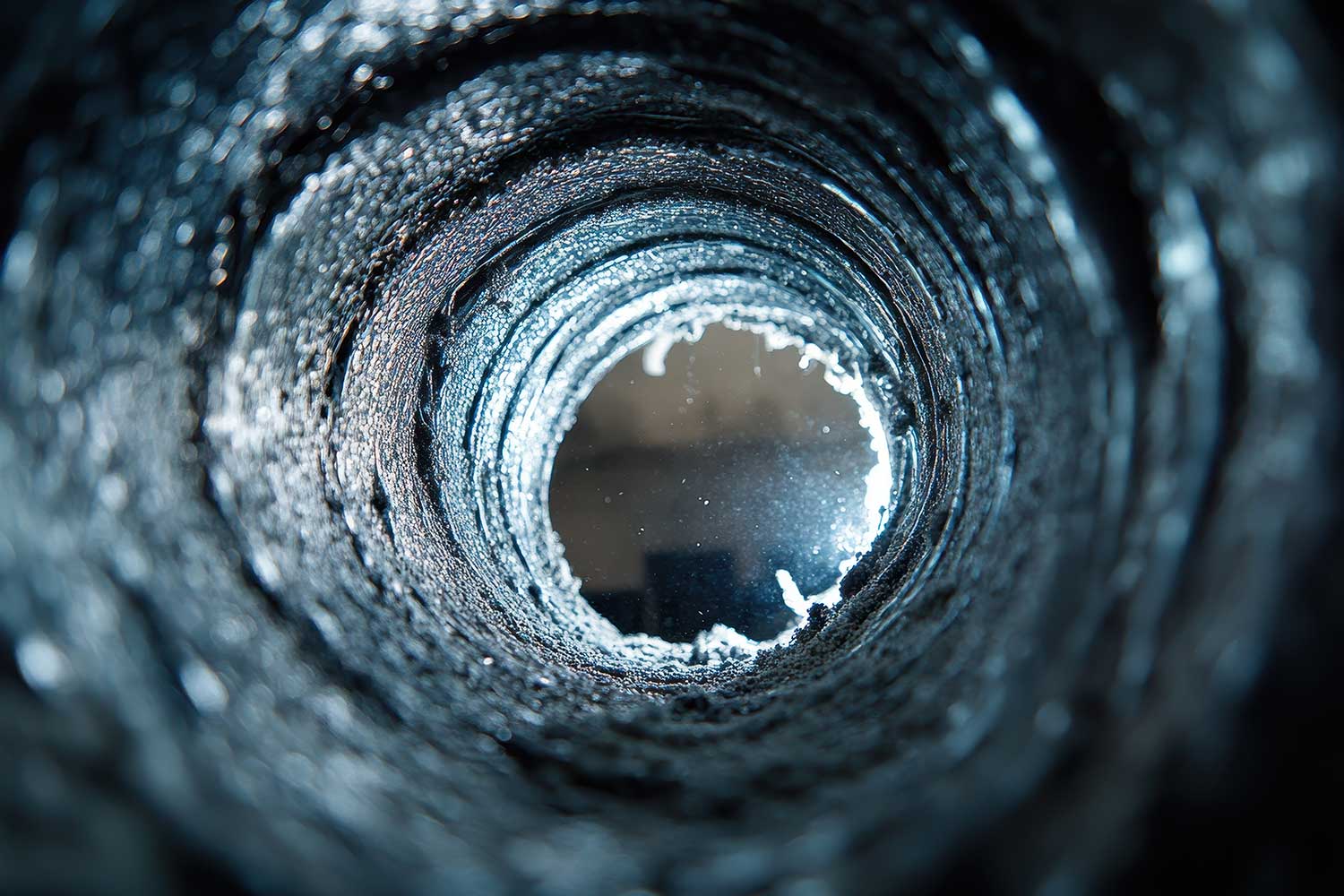When managing multi-family properties in Los Angeles, the financial stakes of maintenance decisions extend far beyond immediate service costs. A single dryer-related fire can result in damage ranging from $50,000 for a contained unit fire to over $500,000 for extensive property damage. With approximately 2,900 dryer fires occurring annually nationwide, property owners face a critical question: how do professional dryer vent cleaning in Los Angeles costs compare to potential fire damage expenses?
Understanding this financial equation becomes essential for property owners managing portfolios across LA’s diverse neighborhoods, where older buildings and varying maintenance standards create different risk profiles.
Understanding Fire Damage Financial Exposure in Multi-Family Properties
Fire damage costs in multi-family properties create cascading financial impacts that extend beyond immediate repair expenses. A typical unit fire involving dryer vents can damage flooring, walls, and HVAC systems, with repair costs averaging $25,000 to $75,000 per unit. However, the financial exposure multiplies when considering adjacent units, common areas, and temporary relocation expenses for displaced tenants.
Los Angeles market factors amplify these costs significantly. The city’s higher construction costs, strict building codes, and permit requirements can increase repair expenses by 30%-40% compared to national averages. Additionally, properties in hillside areas or older neighborhoods face elevated fire risks due to Santa Ana wind conditions and aging electrical systems.
Beyond direct repair costs, property owners must account for lost rental income during repairs, increased insurance deductibles, and potential liability exposure. A moderate fire requiring 60-90 days of repair work can result in $12,000 to $18,000 in lost rent per affected unit, while extensive damage may require 6-12 months of reconstruction.
The compound effect becomes particularly significant for portfolio owners. A single fire event can affect insurance rates across all properties, increase scrutiny during future inspections, and impact property valuations when refinancing or selling assets.
Professional Dryer Vent Cleaning Service Cost Structure
Dryer vent cleaning in Los Angeles for multi-family properties typically follows predictable pricing structures based on unit count, building configuration, and accessibility factors. Standard service costs range from $75 to $150 per unit for properties with 5-20 units, with economies of scale reducing per-unit costs for larger complexes.
Several variables affect pricing across property portfolios. Properties with exterior vent access generally cost less to service than those requiring interior routing through multiple floors. Buildings constructed before 1990 often require additional time due to longer vent runs and potential code compliance issues, increasing service costs by 20%-30%.
Geographic location within Los Angeles also influences pricing. Properties in hillside areas or neighborhoods with limited parking access may incur additional charges for equipment transportation and setup. However, scheduling multiple properties in the same area can reduce travel costs and create opportunities for volume discounting.
Annual maintenance contracts offer predictable budgeting advantages for portfolio managers. These agreements typically reduce per-service costs by 10%-15% while ensuring consistent maintenance schedules across all properties. The financial predictability becomes particularly valuable when managing operating budgets for multiple assets.
Insurance Implications and Premium Considerations
Fire prevention measures directly impact multi-family property insurance costs through multiple mechanisms. Insurance carriers evaluate maintenance documentation when determining premiums, with properties demonstrating consistent fire prevention maintenance often qualifying for reduced rates.
Professional dryer vent cleaning in Los Angeles creates documented maintenance records that insurance companies recognize as risk mitigation efforts. These records can influence claims processing and may prevent coverage disputes if fire damage occurs. Properties with annual maintenance documentation typically experience smoother claims processes and faster settlements.
The relationship between maintenance costs and insurance savings creates measurable ROI opportunities. A property spending $1,200 annually on dryer vent cleaning across 10 units might realize $800-$1,500 in annual insurance premium reductions, effectively subsidizing the maintenance investment.
However, documentation requirements extend beyond simple service receipts. Insurance companies prefer detailed maintenance reports showing specific hazards addressed, compliance with manufacturer recommendations, and photographs of before-and-after conditions. Professional services typically provide this comprehensive documentation as part of their standard service delivery.
Building a Financial Framework for Maintenance Decisions
Developing a systematic approach to maintenance ROI calculations enables consistent decision-making across property portfolios. The basic framework compares annual maintenance costs against potential fire damage exposure, factoring in probability assessments and insurance implications.
Start with a simple cost-benefit equation: annual maintenance cost versus average fire damage cost multiplied by estimated probability. For a 10-unit property, annual dryer vent cleaning in Los Angeles costs of $1,200 compare against potential fire damage of $150,000 with an estimated 1-2% annual probability based on national fire statistics.
This analysis suggests that maintenance costs represent approximately 0.8% of potential damage exposure annually, creating a compelling risk mitigation investment. Factor in insurance premium reductions and lost rental income prevention, and the ROI calculation becomes even more favorable.
Portfolio-level budgeting approaches should account for varying risk profiles across different properties. Older buildings or those with previous maintenance issues warrant higher maintenance frequency, while newer construction may support standard annual service schedules. Create property-specific risk assessments to optimize maintenance allocation across your entire portfolio.
Consider implementing tiered maintenance strategies based on property age, tenant demographics, and historical maintenance issues. Properties with higher turnover rates may benefit from more frequent inspections, while stable tenant properties might maintain effective risk management with annual professional cleaning.
Stay Ahead of Issues by Being Prepared
The financial analysis clearly demonstrates that professional dryer vent cleaning represents a low-cost insurance policy against potentially catastrophic fire damage. With annual maintenance costs typically representing less than 1% of potential fire damage exposure, the investment provides compelling risk mitigation value for Los Angeles multi-family property owners.
Successful implementation requires viewing maintenance as an integrated component of your overall asset protection strategy. Document all maintenance activities thoroughly, coordinate scheduling across your portfolio for cost efficiency, and factor insurance implications into your ROI calculations. This systematic approach transforms reactive maintenance into proactive risk management that protects your long-term investment value while providing measurable financial returns through insurance savings and risk reduction.
Frequently Asked Question
How do I calculate potential fire damage costs for ROI analysis?
Calculate potential exposure by estimating repair costs ($25,000-$75,000 per unit), lost rental income during repairs ($200-$300 per day per affected unit), and insurance deductible amounts. Factor in probability rates (1-2% annually based on national statistics) and multiply by your total exposure to determine expected annual loss. Compare this against annual maintenance costs to establish ROI.
How does dryer vent maintenance affect property insurance claim history and future premium calculations?
Documented maintenance creates a paper trail that insurance companies use to evaluate risk management practices. Properties with consistent maintenance records experience faster claim processing and may qualify for premium reductions of 5%-10%. This documentation also prevents coverage disputes and demonstrates due diligence in fire prevention, which becomes crucial if claims arise.
What portfolio-scale budgeting approaches work best for multi-property dryer vent cleaning programs?
Implement staggered maintenance schedules across your portfolio to spread costs throughout the year while maintaining cash flow predictability. Group properties by geographic location to reduce service travel costs, and negotiate annual contracts covering multiple properties for volume discounts. This approach typically reduces overall maintenance costs by 15-20% compared to individual property scheduling.




